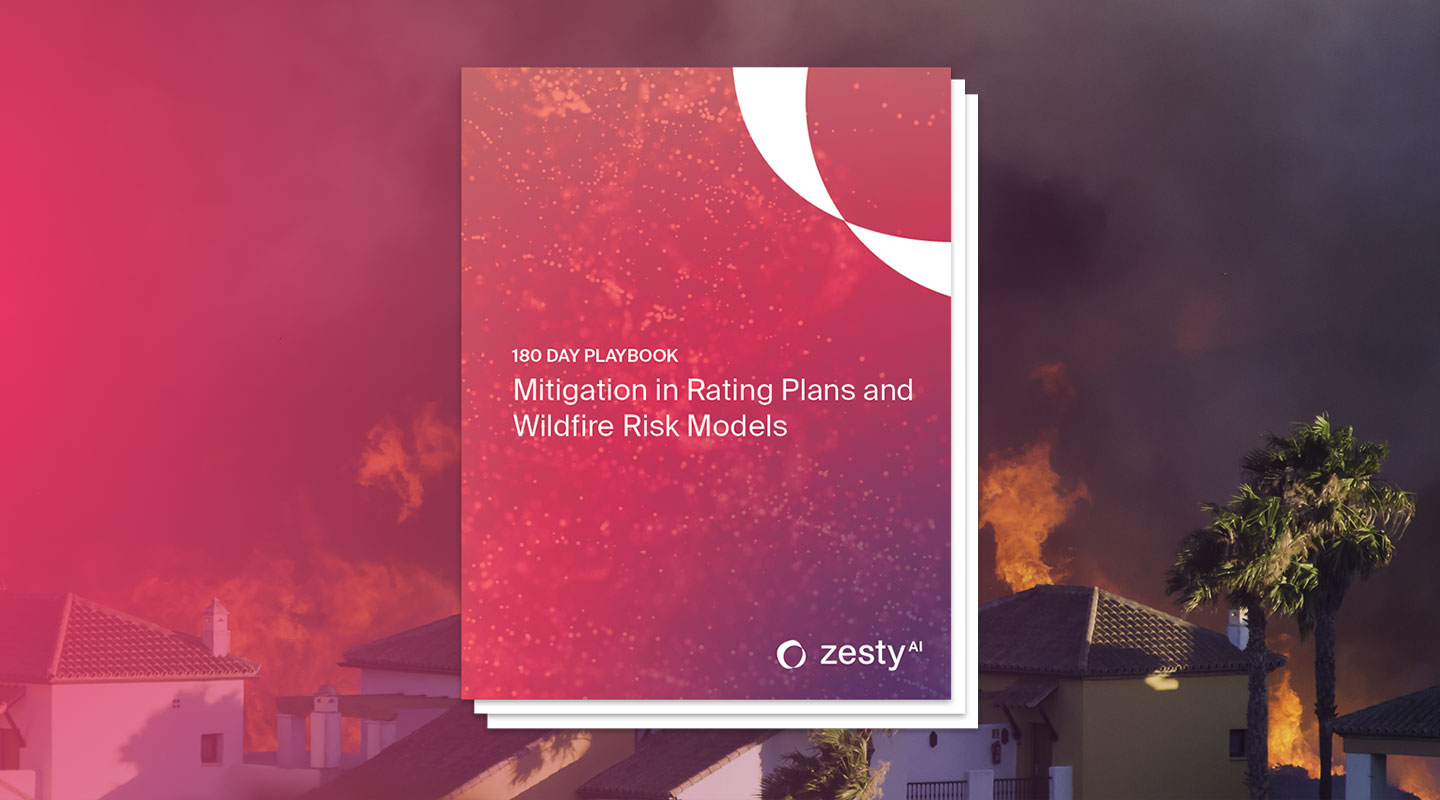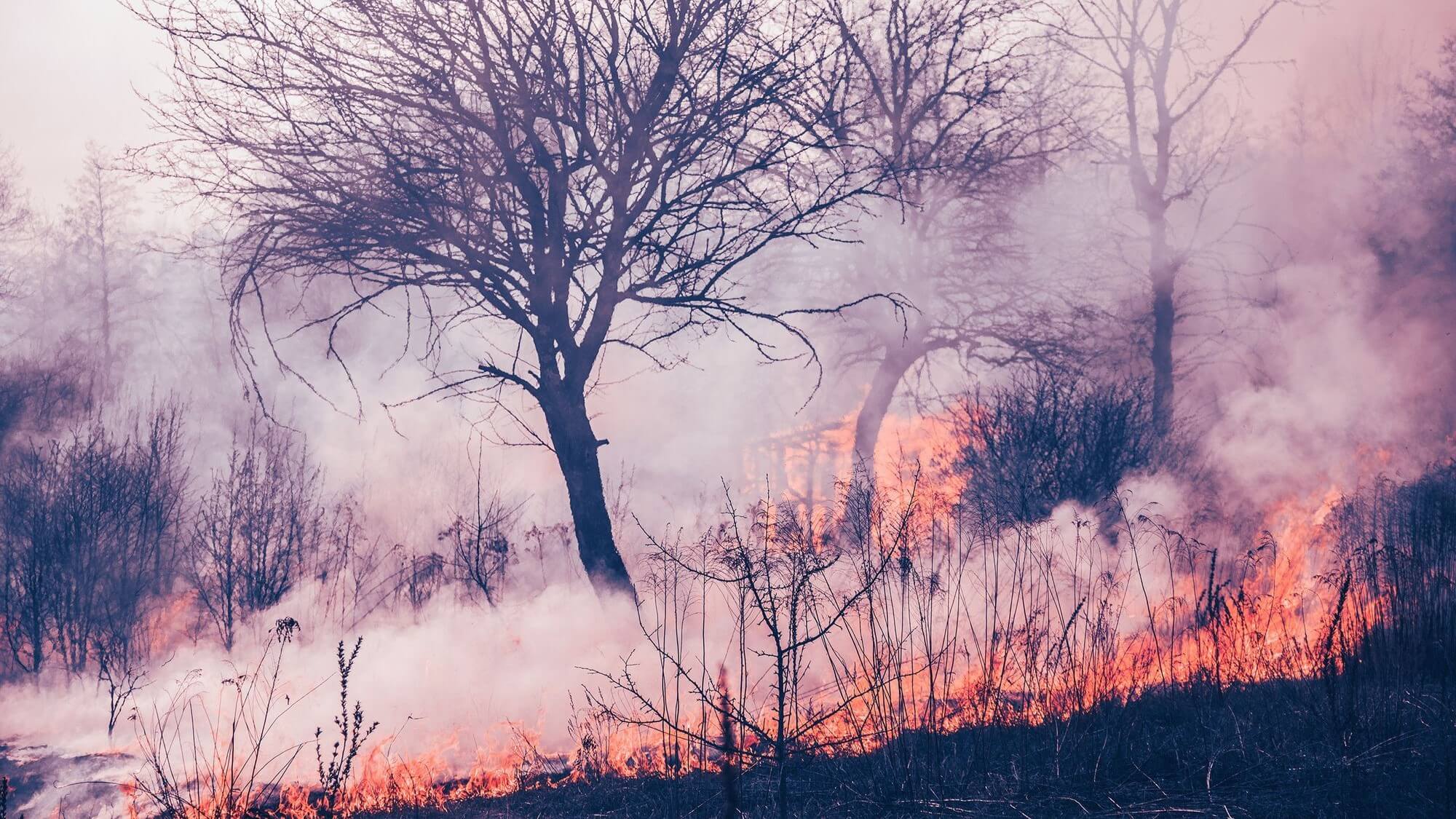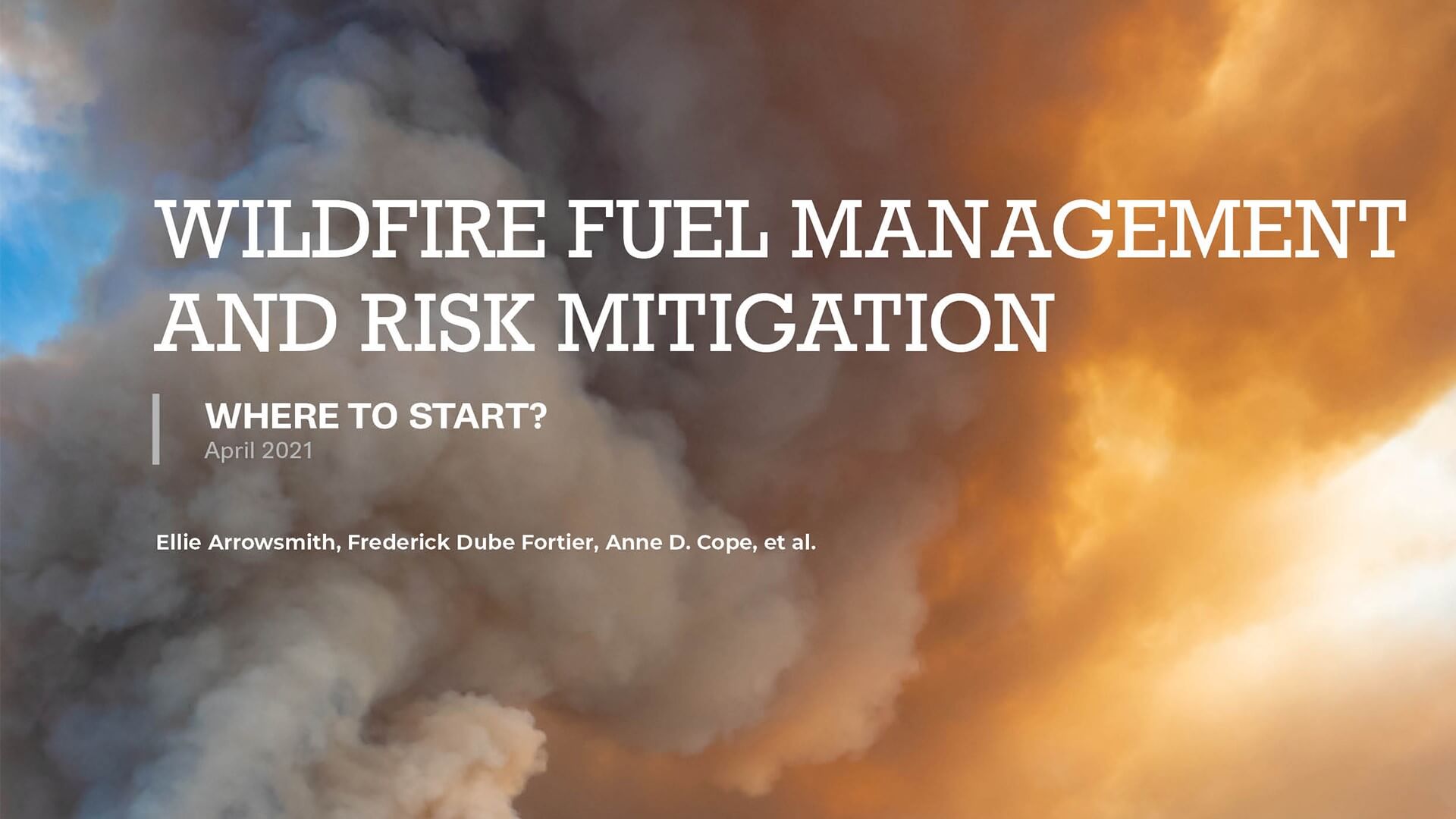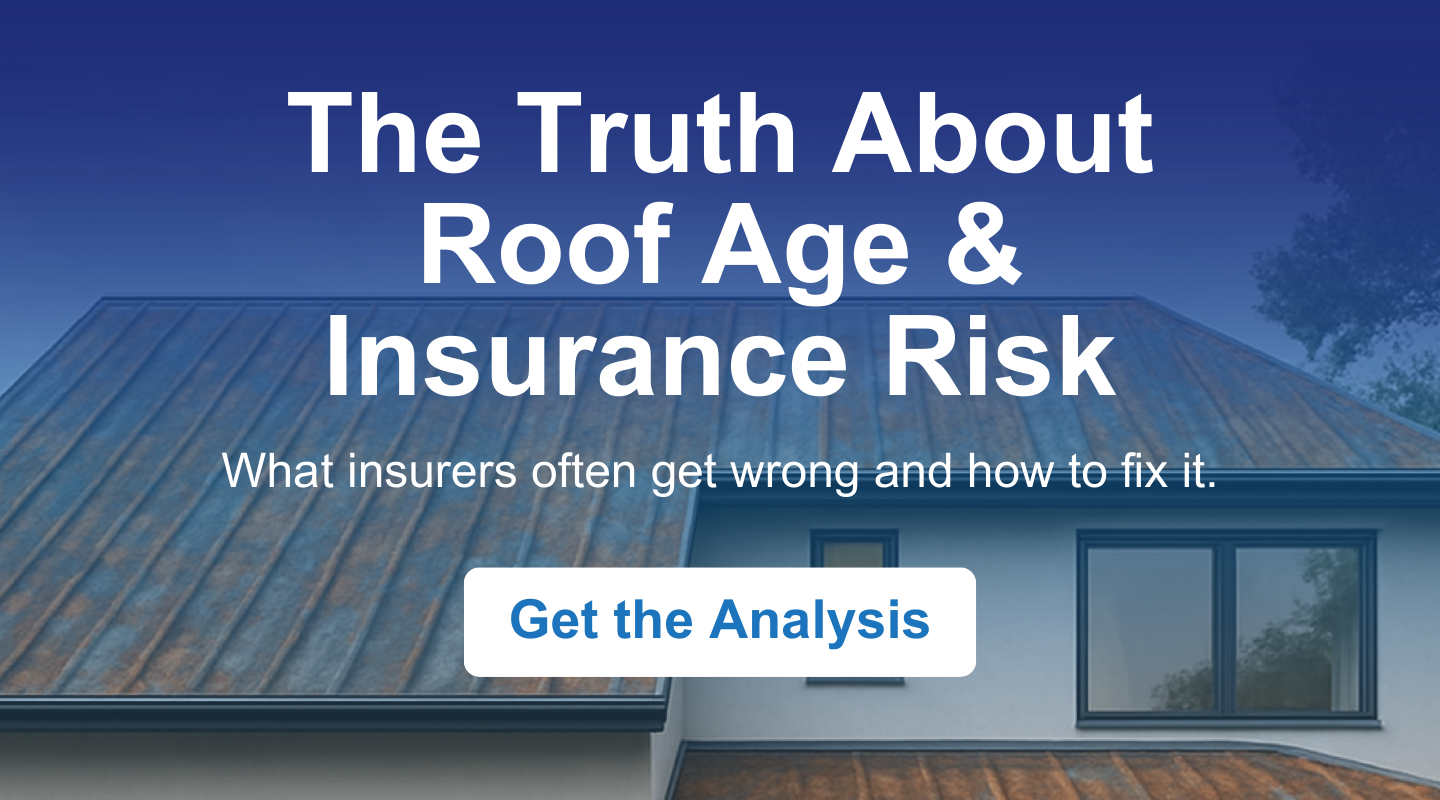Reports & Research
Explore proprietary research packed with data, insights, and real-world findings to help carriers make smarter decisions.
.png)
As Hail Damage Continues Across the U.S., New Research From ZestyAI and IBHS Works to Make Hail Losses More Predictable
Research considers valuable data on smaller hailstone impacts, which are likely responsible for 99 percent of the impacts on a roof from a hailstorm.
San Francisco, CA, April 19, 2023 – Today ZestyAI, the leading provider of climate and property risk analytics solutions powered by artificial intelligence (AI), and the Insurance Institute for Business & Home Safety (IBHS) released new research examining catastrophic losses from severe convective storms, particularly hail. The study focuses on hail-driven losses in property and casualty insurance.
Hail losses are a persistent problem for property insurers’ risk management efforts. Historically, carriers have focused on intense events to predict hail risk, with supporting data confined to storms with hailstones larger than one or two inches. The study Small Hail, Big Problems, New Approach shows high concentrations of small hail are more important than previously thought, pointing to an opportunity to broaden data sets to account for the cumulative effect all hailstorms have on a roof’s susceptibility to damage over time, leading to a claim.
This new research shows all hail needs to be accounted for when modeling and ultimately understanding losses. Using data from all hail events, not just those with hail that meet the severe criteria of one inch or greater, allows carriers to consider valuable data on smaller hailstone impacts. Additionally, insurers can integrate climate and materials science to better understand hail frequency and severity. Research suggests using this new approach could perform as much as 58 times more accurately than looking at events with large and very large maximum hail sizes alone, allowing carriers to more effectively assess hail risk, achieve more profitable underwriting and open up ratings to previously avoided areas.
“As we’ve learned more about hailstorms, we've discovered storms that produce large concentrations of small hail are more common than we thought, and despite causing less individual damage than a single large hailstone, small hail, especially in high concentrations, is likely a meaningful contributor to the loss we see each year from hail,” said Dr. Ian Giammanco, managing director of standards and data analytics at IBHS. “Experiments also show large concentrations of smaller hailstones cause degradation to the asphalt shingles, specifically dislodging large amounts of granules. Once enough granules are lost, the underlying asphalt material can become more susceptible to aging and weathering. Repeated exposure to these types of hailstorms can shorten the life of an asphalt shingle roof and increase the damage caused by large hailstones in the next storm.”
“Hail losses are a persistent problem for property insurers’ risk management efforts,” said Attila Toth, founder and CEO of ZestyAI. “Three of the nation’s five largest publicly-traded P&C carriers mentioned hail as a key concern in 2022 financial reports. Greater losses have brought attention to hail risk, and the insurance industry needs better approaches to solve this problem.”
“Three of the nation’s five largest publicly-traded P&C carriers mentioned hail as a key concern in 2022 financial reports. Greater losses have brought attention to hail risk, and the insurance industry needs better approaches to solve this problem.”
Hail risk can be especially costly to insurers because, unlike other catastrophic perils like hurricanes and wildfires, it can be difficult to identify the storm that caused a hail claim. As a result, insurance carriers could be forced to raise overall premiums or introduce high deductibles to compensate for the added costs.
As climate and materials science have developed, more data has become available providing improved hail risk evaluation options that can lead to better decisions at earlier stages of the policy life cycle. Other benefits could include more profitable underwriting, a greater ability to rate previously-avoided areas and significantly reduced loss ratios.
For the complete ZestyAI and IBHS research paper visit this page.
About ZestyAI
ZestyAI offers insurers and real estate companies access to precise intelligence about every property in North America. The company uses AI, including computer vision, to build a digital twin for every building across the country, encompassing 200 billion property insights accounting for all details that could impact a property’s value and associated risks, including the potential impact of natural disasters. Visit zesty.ai for more information.
About the Insurance Institute for Business & Home Safety (IBHS)
The IBHS mission is to conduct objective, scientific research to identify and promote effective actions that strengthen homes, businesses and communities against natural disasters and other causes of loss. Learn more about IBHS at ibhs.org.
###
For more information, contact:
Linsey Flannery
Director of Communications, ZestyAI
416-939-9773
Mary Anne Byrd
Communications Director, IBHS
803-669-4216

90-Second Fact Sheet: The Reinsurance Market in 2023
Reinsurance rates are spiking to an all-time high. Fitch estimated a 20-60% rate increase for cedants in the overall property reinsurance market at the January 1st renewals.1 Terms and conditions are also tightening - many reinsurers are limiting their cedants to much higher attachment points2, or exiting CAT-exposed lines altogether
The main drivers for uptick in reinsurance rates
Our research has found three drivers underpinning the trend:
1. Devastating CAT losses, particularly from secondary perils
59% of all CAT losses come from secondary perils3, and those losses have caused major shifts in the reinsurance landscape. Howden estimates that global property CAT reinsurance rates were up 37% at the January renewals4.
2. A new urgency to improve return on capital
“When the cost of capital is equal to the rate of return, something has to change.” - Aditya Dutt, CEO of Aeolus Capital Management5. The reinsurance industry has underperformed since 2017, with an average return on equity of just under 5%6. Poor underwriting performance was a key driver, with an industry average 101% combined ratio over the same period7. Reinsurers are poised to use the tightening market as a chance to improve performance, with Fitch forecasting a 4pp underwriting margin expansion for reinsurers in 20238. Unfortunately for primary insurers, Goldman Sachs predicts that the same tightening market will create significant volatility for cedants9.
3. Value erosion in reinsurer investment portfolios
Macroeconomic factors are driving significant unrealized investment losses for reinsurers, particularly on fixed income portfolios due to rising interest rates. Aon estimates that these investment portfolio losses drove a 17% decline in global reinsurance capital across the first 9 months of 2022, with some players reporting equity value losses as high as 40-50% over that period10. Reinsurers will look to shore up these losses with better underwriting performance, which likely means tougher rates for primary carriers.
How property insurers can improve their odds with AI-powered predictive climate and property risk platforms
These factors mean that primary insurers can expect challenging reinsurance negotiations at the June 1st renewal deadline, particularly on property lines. However, new AI-powered predictive climate and property risk platforms can improve the odds for property insurers in three areas:
1. Rapid improvements in risk mitigation
Implementation-free portfolio reviews can quickly drive major loss ratio improvements.
2. Turn the tables of CAT risk screening in your favor
Improving data quality can lead to more favorable stochastic model portfolio screens, particularly with insight about the roof.
3. Enter the room as a leader in cutting-edge risk practices
Showing the same commitment to new technologies as industry leaders can help cedants build a better case.
Conclusion
With the right mitigation action and a cutting edge view of portfolio risk, cedants can navigate the upcoming 6/1 renewal successfully.
Learn more about how an AI-powered predictive climate and property risk platform can help you.
------------------------------------------------------------------------
Sources
1 & 8 - Fitch, Reinsurers’ Underwriting Margins to Expand by 4pp in 2023
2 & 3 - Gallagher Re, Gallagher Re Natural Catastrophe Report 2022
4 - Howden, Howden’s renewal report at 1.1.2023: The Great Realignment
5 - AM Best, Reinsurance: Roundtable Discussion on Renewals and What 2023 May Hold
6, 7 & 10 - AON, Reinsurance Market Dynamics
9 - Reinsurance News, Hard market to increase volatility for primary insurers: Goldman Sachs

ZestyAI Announces 180-day Playbook to Navigate First-of-its-kind Wildfire Regulatory Requirements in California
Playbook Leverages Historic Regulatory Success of ZestyAI’s Wildfire Model (Z-FIRE™) to Lead Insurance Carriers Towards Regulatory Compliance in the Largest Insurance Market in the U.S.
San Francisco, CA, September 20, 2022 – ZestyAI, the leading provider of property risk analytics solutions powered by Artificial Intelligence (AI), has developed a 180-day playbook to support insurance carriers as they work to meet the Mitigation in Rating Plans and Wildfire Risk Models regulation expected to be adopted by the California Department of Insurance (CDI) before year-end. The playbook reflects the company’s unique ability as the only comprehensive solution in the marketplace to help insurers meet or exceed every single requirement in the new regulation — meeting 100 percent compliance inside the tight 180-day window.
On September 7, 2022, Insurance Commissioner Ricardo Lara announced he had submitted the department’s insurance rating regulation recognizing wildfire and safety mitigation efforts made by homeowners and businesses, to the California Office of Administrative Law for final approval. This first-of-its-kind regulation will require all insurers in California to refile their existing rating plans on an aggressive 180-day timeline.
“Eight of the ten most destructive wildfires in California’s history have occurred in the last five years,” said Attila Toth, Founder and CEO of ZestyAI. “While the new wildfire regulations will have a significant impact on California’s insurance industry, adapting to this peril is key to having a sustainable insurance ecosystem in California. As the leader in property-specific wildfire risk assessment, we have offered input at each step of this process. We are here to support admitted carriers with a turnkey solution complying with every single requirement as they navigate this process and work to meet the new regulations.”
The new wildfire safety regulation requires insurance companies to consider the structure of a home, its surroundings, and community-level mitigation. Insurers with concerns about the regulation can reach out to ZestyAI to get a complete explanation of how the regulations will impact them. This includes access to the 180-day playbook, which breaks down the regulatory compliance process into an orderly roadmap that addresses all three major challenges that insurers will face:
- Operational — The process of rapidly integrating new data sources, educating the public on how wildfire mitigation affects insurance policies, and a framework for a compliant appeals process.
- Rating — How to weight property-specific characteristics, including those with and without historical loss data, in rating plans as well as guidance on mitigation credits.
- Filing — Carriers who use a rating plan reliant on traditional wildfire models without property-specific information will need to overhaul their rating framework. Relying on multiple approved rate filings, ZestyAI has developed a comprehensive filing toolkit that can support carriers at every facet of the filing process.
ZestyAI’s Z-FIRE™ model has quickly become the leader in property-specific wildfire risk assessment. Using AI algorithms trained on more than 1,500 wildfire events across 20 years of historical loss data, Z-FIRE™ provides a level of detail that is of essential value to both the insurer and the homeowner.
The model was the first AI model ever approved as part of a rate filing by the CDI and the second wildfire risk model. It has been widely adopted across the Western U.S., where its use has been approved for both underwriting and rating. During 2021's APCIA Western Region Conference, CDI representatives expressed that the agency’s familiarity with Z-FIRE™ means in future filings the focus will be limited to the carrier's specific use of the model, not the details of the model itself, potentially greatly expediting the reviews of carriers using the Z-FIRE™ model.
ZestyAI’s Z-FIRE™ considers features such as topography and historical climate data in combination with factors extracted from high-resolution imagery of the property itself and its surroundings, including homeowner and community mitigation efforts, to provide both neighborhood and property-specific risk scores.
A significant advantage to insurance carriers is that they can use these data elements to communicate with homeowners on what specific actions can be taken to lower their property’s risk, such as upgrading building materials and cutting down surrounding dry brush or overhanging vegetation. The impact of mitigation efforts can be significant. A joint study by the Insurance Institute for Business & Home Safety (IBHS) and ZestyAI, which studied over 71,100 wildfire-exposed properties, found that property owners who clear vegetation from the perimeter of their home or building can nearly double their structure's likelihood of surviving a wildfire.
About ZestyAI
ZestyAI offers insurers and real estate companies access to precise intelligence about every property in the United States. The company uses AI, including computer vision, to build a digital twin for every building across the country, encompassing 200 billion property insights accounting for all details that could impact a property’s value and associated risks, including the potential impact of natural disasters. Visit zesty.ai for more information.

ZestyAI Publishes Data-Driven Look at 2022 Wildfire Season
2022 Wildfire Season Overview looks back at 2021 and ahead to what may be a long year of wildfires in 2022.
Today, ZestyAI released its 2022 Wildfire Season Overview. Each year, ZestyAI prepares a comprehensive overview to help guide insurers based on recent wildfire events, persistent drought conditions, and advancements in artificial intelligence for managing wildfire risk.
If it seems like wildfires are burning at all times of the year, it's not just you. Very destructive events, like last December's Marshall Fire, are occurring in months not typically associated with high wildfire danger. Those who study wildfires, including ZestyAI, have begun to start thinking in wildfire "years" instead of wildfire "seasons'. Strong wildfire years, with 10+ million acres burned, have quickly become the new normal. The last 10 years have been the worst on record for property and casualty (P&C) insurers when it comes to wildfire. 8 of the top 20 fires in California history, and more than half of the acreage burned by them, occurred in just the years 2020 and 2021.
What can insurers do to prepare themselves for persistent wildfires?
- Understand the Data: Instead of sticking with decades-old approaches, assess wildfire risk at the property level.
- Continue to Bring Transparency and Education to Homeowners: Insights from AI-based wildfire risk models may be passed on to homeowners and agents, enabling a much better understanding of wildfire risk.
- Find the Right Technology Partner: Aerial and satellite imagery, machine learning, and infinitely scalable cloud computing resources were combined to build the most granular wildfire risk assessment model (Z-FIRE™). Using Z-FIRE™, ZestyAI can accurately estimate an individual property’s wildfire risk, plus highlight the key property-level factors that contribute to that risk.
Click here to download ZestyAI's 2022 Wildfire Season Overview.
ZestyAI offers insurers and real estate companies access to precise intelligence about every property in North America. The company uses AI, including computer vision, to build a digital twin for every building in North America, encompassing 200B property insights accounting for all details that could impact a property’s value and associated risks, including the potential impact of natural disasters. Visit https://zesty.ai for more information.

The 2021 Wildfire Season has Devastating Potential
A Data-Driven Conversation about the US West’s Megadrought
Current climate conditions in the West reveal that 2021 may have a higher than normal risk for wildfire losses. While much of this report focuses on California, historically the worst victim of wildfire in the US, the entire western US is of concern in 2021. In particular, the expansion of deep drought into Colorado is of major concern.
Drought is a leading factor in seasonal wildfire risk. With drought extending through every western state this spring, insurers should consider looking deeply into how they are addressing this growing peril. According to AON, last year’s wildfires in the US West cost insurers over $8 billion.
We've released a complete detailing the devastating potential for 2021's wildfire season. The full report is available here.

Nearly Doubling a Property’s Wildfire Survival Rate: New Study from ZestyAI in Collaboration with IBHS Shows Impact of Key Mitigation Action
Research across more than 71,000 properties involved in wildfires draws significant links between fuel management and property survival.
Oakland,Calif., April 8, 2021: ZestyAI, a leader in climate risk analytics powered by Artificial Intelligence (AI), and the Insurance Institute for Business & Home Safety (IBHS) today released new research on how fuel management impacts destruction rates from wildfires. They found property owners who clear vegetation from the perimeter of their home or building can nearly double their structure's likelihood of surviving a wildfire.
ZestyAI, in conjunction with, IBHS studied more than 71,000 properties involved in wildfires between 2016 and 2019 to assess the relationship between vegetation, buildings, and property vulnerability. To do this, ZestyAI leveraged a combination of computer vision and AI to analyze high resolution satellite and aerial imagery of the properties that fell within the wildfire perimeter, which allowed them to determine what effects a property's physical environment had on its likelihood of survival. They found buildings with a high amount of vegetation within 5 feet of the structure were destroyed in a wildfire 78 percent of the time -- a rate nearly twice as high as those with small amounts of perimeter vegetation. This pattern held true as ZestyAI analyzed the other defensible zones, ranging from 30 to 100 feet around the property.
"It's common sense that increased vegetation increases wildfire risk, but this study shows just how powerful individual action can be in safeguarding structures. Mitigation actions that can cut risk nearly in half are statistically meaningful to anyone with a stake in this peril," said Attila Toth, CEO of ZestyAI. "These findings also underscore how wildfire research at IBHS and artificial intelligence at ZestyAI translates to real-world impact at the intersection of homeowners, community leaders, regulators, and insurance carriers. This type of collective action will help protect our communities from the devastating impact of wildfire, which unfortunately has continued to increase over the last decade."
The study also supported and confirmed takeaways from IBHS's Suburban Wildfire Adaptation Roadmaps released last year, which go beyond the home ignition zone to detail additional actions needed across eight aspects of a home to address a home's wildfire vulnerability. ZestyAI's new research found that having other structures in close proximity to a property increases its wildfire risk, particularly for properties in areas with moderate to high vegetation coverage. Buildings in these areas that had another structure within 30 to 100 feet from the property were destroyed in a wildfire 60 percent of the time, compared to a 31 percent destruction rate for homes without another structure in close proximity.
"This research further demonstrates to homeowners, community leaders, and policy makers just how impactful taking the mitigation actions laid out in the Suburban Wildfire Adaptation Roadmaps can be in protecting homes from wildfire ignition," said Roy E. Wright, President & Chief Executive Officer at IBHS. "Quantifying the effect of mitigating fuel density risk, one of the critical actions identified in the Roadmaps, is a first piece in the larger puzzle of what groups of mitigation actions most improve the chance of home survival and by what level."
ZestyAI is uniquely equipped to support this type of research because of the proprietary wildfire property loss database it developed for Z-FIRE™, its AI model that generates property-specific predictive risk scores. Z-FIRE™ has been trained on more than 1,200 wildfire events across several decades and accounts for the property-level factors that contribute to wildfire risk, including defensible space, building material, and roof pitch, which legacy models fail to consider.
Wright added, "While it is not possible to eliminate wildfire risk we are not powerless against it. We must take a pragmatic approach to mitigate risk at all levels and ultimately reduce property damage through data and science. Through collaborations with modelling organizations like ZestyAI, advanced technology like computer vision and AI help us better understand the impact of these actions at a larger scale. It is encouraging to see emerging progress in just the first months of 2021."
For additional insights you can read the full research paper, ‘Wildfire Fuel Management and Risk Mitigation - Where to Start?' here. For more information on ZestyAI please visit www.zesty.ai, and for more information on IBHS please visit www.ibhs.org.
About ZestyAI (www.zesty.ai): Increasingly frequent natural disasters, such as wildfires, floods and hurricanes devastated communities and drove $2.2 Trillion in economic losses over the past decade. ZestyAI uses 200Bn data points, including aerial imagery, and artificial intelligence to assess the impact of climate change one building at a time. ZestyAI has partnered with leading insurance companies and property owners helping them protect homes, businesses and support thriving communities. ZestyAI was named Top 100 Most Innovative AI Company in the world by CB Insights in 2020, and Gartner Cool Vendor in Insurance by Gartner Research in 2019. For more information visit: https://www.zesty.ai/
About the Insurance Institute for Business & Home Safety (IBHS)
The IBHS mission is to conduct objective, scientific research to identify and promote effective actions that strengthen homes, businesses and communities against natural disasters and other causes of loss. Learn more about IBHS at DisasterSafety.org.
See How Insights Turn Into Decisions
ZestyAI transforms data into action. Get a demo to see how the same AI powering our reports helps carriers make faster, smarter, regulator-ready decisions.









